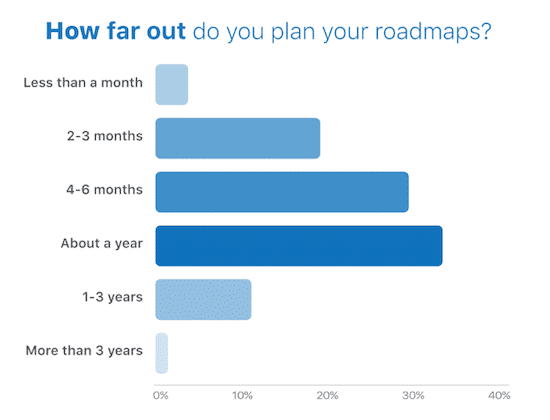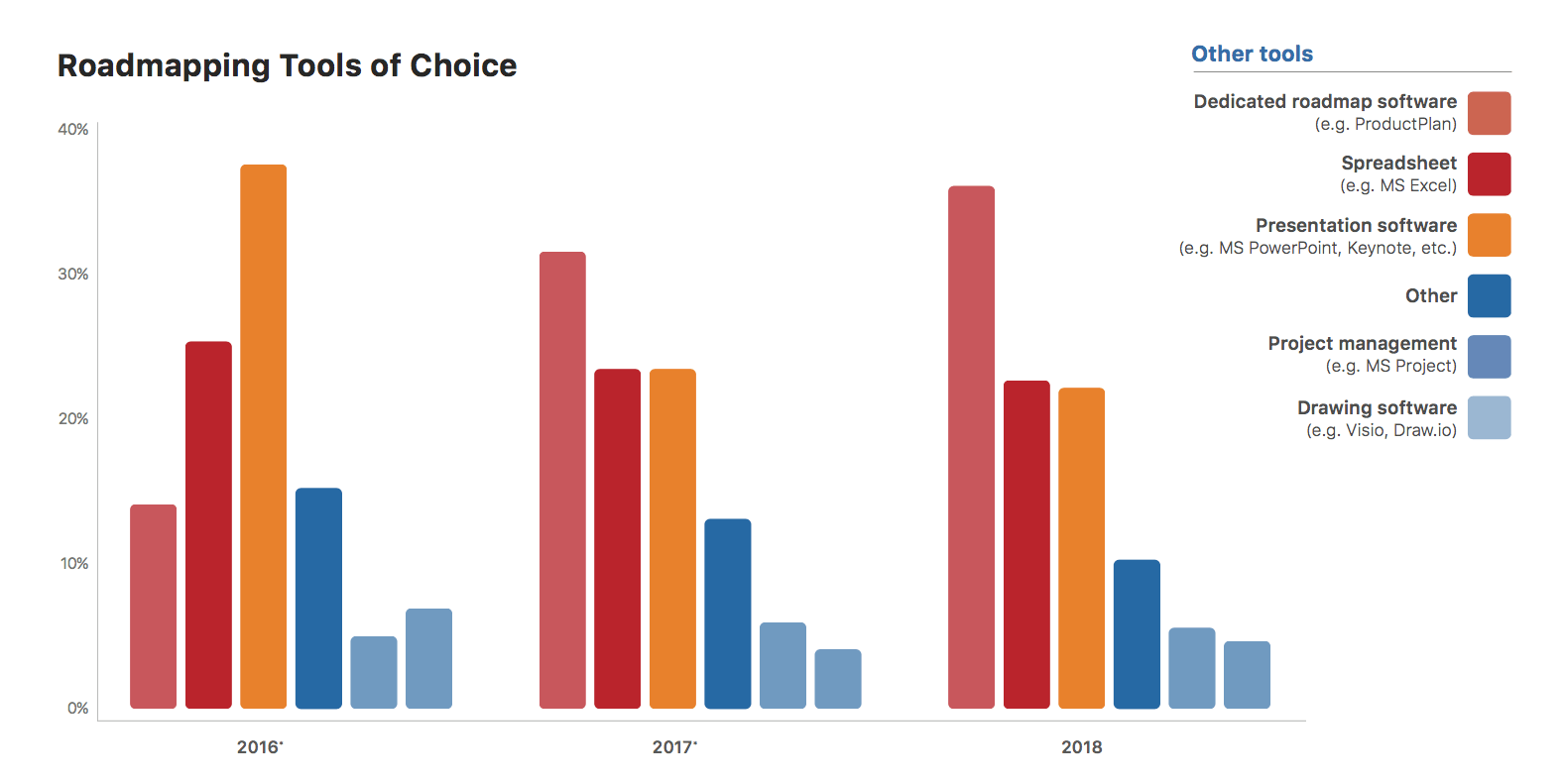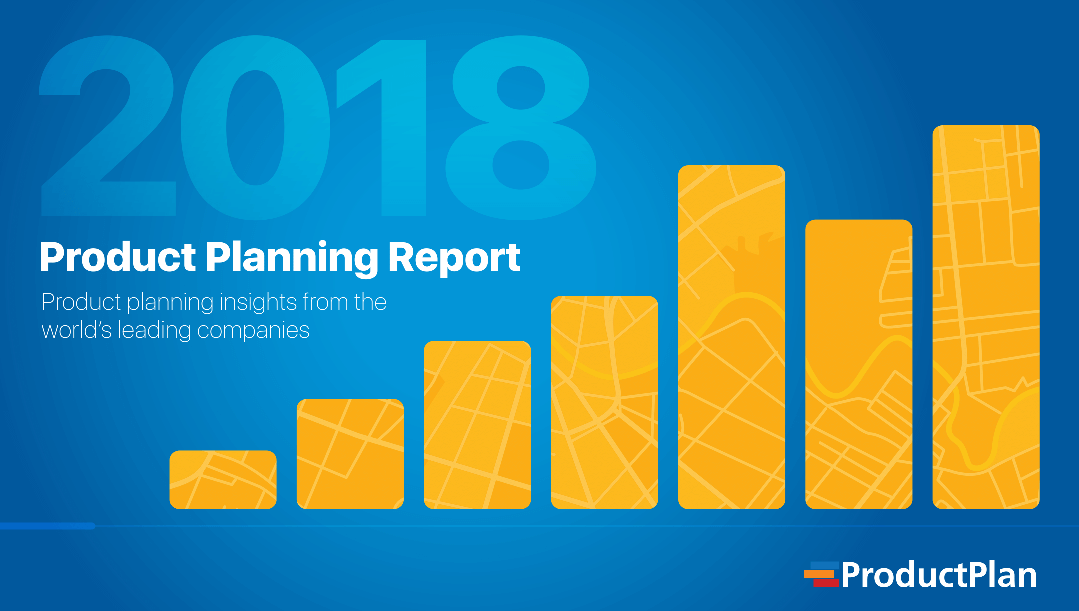The product management role is incredibly dynamic and, frankly, that’s part of the appeal. The rules aren’t always clearly defined, allowing for product managers to develop their own ways of doing things. But every so often, we need a little perspective. We want to know how our product planning process compares to others in our field.
That’s why conducting our annual product planning report has become one of our favorite practices. Not only does it provide valuable insight to fellow product managers, but it also reminds us that the daily joys and challenges of being a product manager are universally experienced.
This year’s survey did not disappoint. The trends revealed in the 2018 Product Planning Report show that product management norms are changing quickly, and successful product managers are willing to adapt. Read on for a sampling of interesting insights from this year’s survey.
Report Methodology
Before we dive in, let us give you some background. The data for this benchmark report is the result of an extensive study we conducted for 30 days. We sent a survey to our extensive network to gather input from product managers around the world.
We received more than 500 responses from professional product managers that work in a variety of companies and industries. We then compiled the results and identified trends against the same report from previous years. So grab a coffee and get ready to compare notes with your peers from around the globe.
The Evolving Role of the Product Manager
Product management responsibilities vary from one organization or industry to another. Ultimately, you are responsible for aligning the needs of the business with those of your customer so you can set the strategic direction for your product. The product manager’s role is exciting, but our study shows that product strategy norms are changing, and new challenges are emerging.
Jumping Into the Numbers
As teams have adopted agile methodologies, the typical product planning cycle has become compressed. Strategic product roadmaps, which historically have projected several years, are now averaging 9 months.

It’s worth noting that this average varies between industries. Due to the physical nature of their products, manufacturers have the longest planning cycles of around 15 months. Those in the media industry report the shortest time frame of about 7 months.
Across all industries, product managers find it difficult to gain alignment on their product direction. “Determining which initiatives make it on the roadmap” was reported to be the most time-consuming aspect of building a roadmap by 34% of respondents. Yet, commitment to the roadmap is tenuous. To stay focused on the most important tasks, over 40% of teams said they re-prioritize items in their backlog each week.
That’s a lot of juggling!
Key Findings:
- Product planning is owned by the product manager.
- Product strategy is planned 9 months out.
- Backlog items are re-prioritized weekly.

The Shift Toward Purpose-Based Tools
In the past, product managers depended on multi-purpose tools like spreadsheet, presentation, and project management software to document and communicate their strategies. Many still do. But as the product planning cycle has shortened, companies have begun to adopt purpose-based tools that offer deep functionality and real-time collaboration.
New solutions have sprung onto the landscape in response to the changing needs of today’s workforce. Tools like Jira to manage product backlogs, Trello to collaborate on task management, or Slack for team communication has become common. And, of course, our personal favorite (shameless plug) is the ProductPlan roadmapping solution which integrates with each of these popular collaboration tools.
Over the last 3 years, we’ve noticed a marked increase in the number of product managers that are reporting a reliance on product roadmapping tools. In 2016 only 14% of survey respondents were using a roadmapping solution. In 2018, 37% of product managers now rely on a purpose-based roadmapping tool. That’s a significant increase!

Gartner’s Market Guide for Product Roadmapping Tools further supports our findings. According to Gartner:
“By 2022, over 50% of product managers will rely on product roadmapping tools to improve planning and communication with IT and business stakeholders.”
With the right mix of solutions, today’s product managers can keep pace. They can update their strategic product roadmaps in real-time, in less time. We found that a mere 4% of product managers using dedicated roadmap software list “roadmap editing” as a top challenge.
Key Findings:
- Roadmaps are increasingly built using roadmapping software.
- Roadmapping software is saving product managers time.
Effective Communication Remains Critical
Communication has always been an important skill for product managers, but in an agile world, it’s not so easy. As a product manager, it’s your responsibility to keep the right people in the loop at all times.
According to our study, product managers have at least 5 different audiences for their roadmaps and over 50% of them create unique roadmaps for each one.
For example, the information you would share with your executives or sales organization would be vastly different from what you’d share with engineers. Your executive audience doesn’t need the gritty detail. Rather, it needs a high-level roadmap that covers the general strategic plan for your product launch or your team.
A roadmapping solution that eliminates the need to create multiple versions of your strategic plan helps ease the multiple-audience challenge. With dedicated roadmapping software, product managers can create one roadmap with custom views, so each unique audience will only see what you want them to see. This saves you time and allows you to avoid communication errors when sharing or presenting the roadmap.
Key Findings:
- Main audience for roadmaps is executives.
- Different roadmaps are built for different audiences.
- The main objective of the product roadmap is to communicate product strategy.
Wrapping Up
There’s never a dull moment in the life of a product manager. You work with a broad range of interesting people in an effort to deliver amazing products to the world. Yes, expectations are high and the rules are constantly in flux, but isn’t that part of the fun?
Lucky for you, technology is on your side. At ProductPlan we’re constantly looking for ways to make your job easier and to help you keep everyone on the same page. And for those days when you feel like you’re all alone, don’t forget about the 2018 Product Planning Report. A little insight into how other product managers do their jobs may be exactly the perspective you need.




